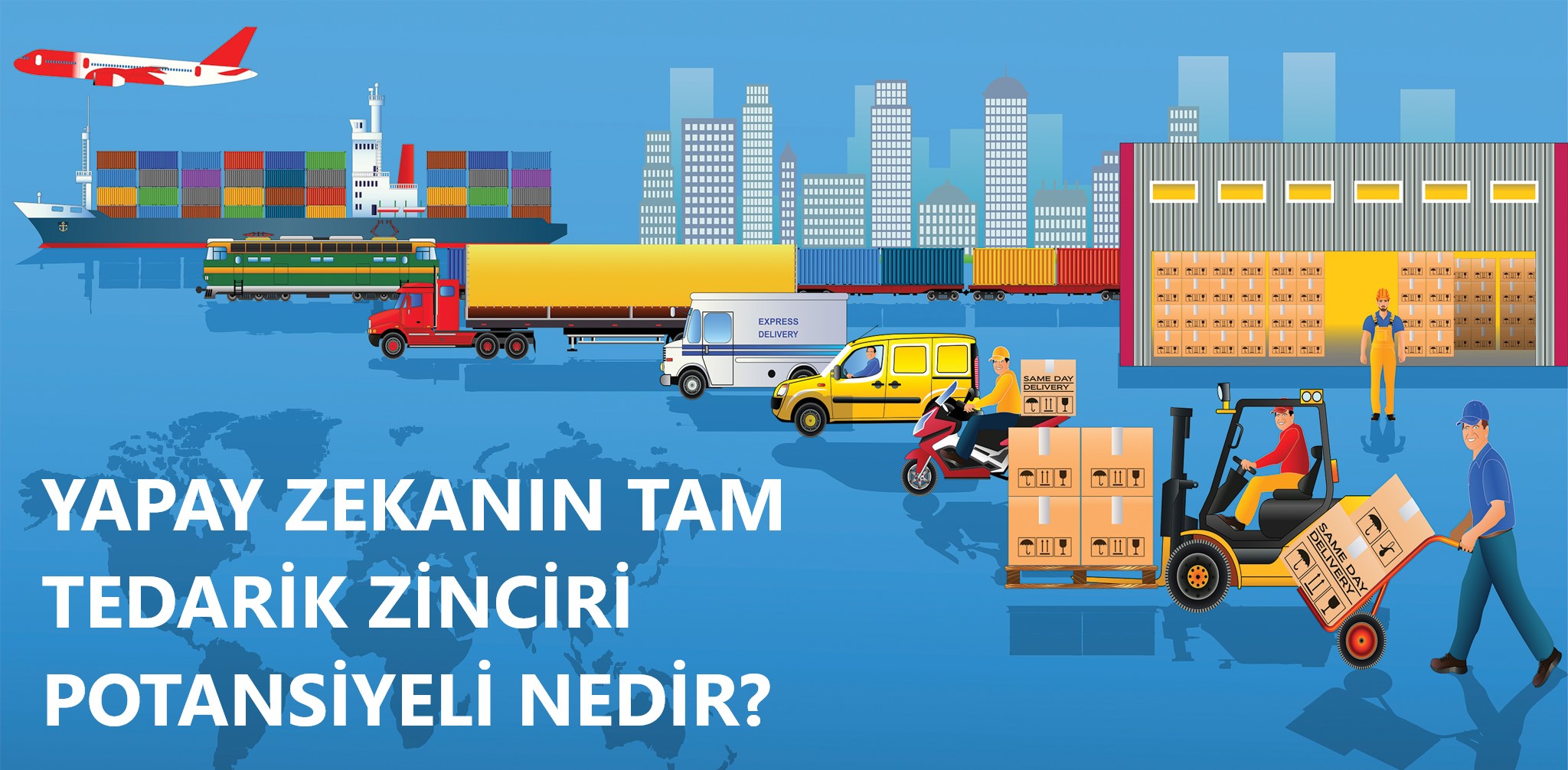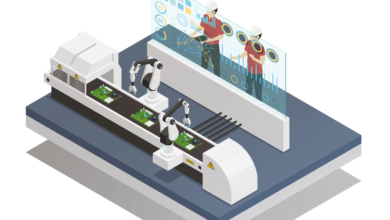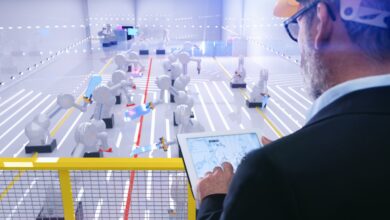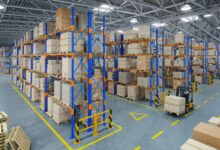What is the Full Supply Chain Potential of Artificial Intelligence?

Gartner mentioned in a recent article about factors that will impact the future of the supply chain that supply chain leaders need to have at least a 10-year plan to deal with industry transformation, but most businesses only plan for more than 3 years when making decisions. Unfortunately, in our country, the outlook for planning for the future is not even that far. It’s not hard to empathize with why decision-makers don’t plan long-term. Who could have predicted the emergence of the coronavirus and the impact of exchange rate increases?
On the other hand, if you want to stay competitive, you have to make predictions about what will happen in the future. Why, you ask? Because old patterns can only repeat themselves for a while, and new trends always emerge eventually. For example, an automobile manufacturer who organizes the entire supply chain based on the idea that the automotive market will never change will run into trouble as hybrid vehicles become more common and the availability of autonomous vehicles to consumers becomes more feasible. Similarly, a manufacturer who assumes that their suppliers will always be in business will eventually find themselves in a difficult situation.
In short, you need to have an idea of what the future of your supply chain will look like in order to proceed correctly now. For us, this means it’s time to start taking artificial intelligence seriously.
The Current State of Artificial Intelligence in the Supply Chain
Technologies related to artificial intelligence, such as machine learning and artificial neural networks, have already received intense interest and excitement. These are not yet fully developed technologies, which means we are still trying to figure out exactly how to integrate them into supply chain planning and other processes. As a result, many comments on these technologies talk about how artificial intelligence could shape the future of supply chains. As we saw above, such forward-looking analyses are important, but postponing action to the future risks ignoring the tangible benefits that new technologies already offer.
For example, today artificial intelligence is already being used in existing supply chains to make better demand forecasts than traditional statistical methods. Or in areas where calculating mathematical optimization for supply chain planning would take too long, artificial intelligence can find “good enough” solutions using constraint programming to model complex distribution networks. Order planners and shippers can optimize truck and container loads in three dimensions, saving money on “air transportation” when transporting goods. Likewise, route and tour planners use sophisticated algorithms that take vehicle and road constraints and real-time traffic information into account to optimize vehicle routing and manage delivery timing. While these applications may sometimes seem futuristic, they are critically important for creating processes that are cost-effective and efficient. Companies using such applications can significantly increase their competitiveness.
How Artificial Intelligence Empowers Industry 4.0
While the applications we summarized represent a real opportunity in themselves, it should be added that they are just the tip of the iceberg. Indeed, we expect artificial intelligence, which is part of the Industry 4.0 paradigm that will define the next evolution of the global supply chain, to reach its full potential. Industry 4.0, with machines capable of making decisions independently of humans and “cyber-physical systems” that will elevate interactions between digitally enhanced processes and physical elements to new heights, will perform real-time planning and scheduling with unprecedented connections and transparency. Without artificial intelligence, this paradigm would be impossible. Artificial intelligence can manage systems with so many data points that it would be incomprehensible for a human planner, thanks to its ability to analyze at the speed of light and not requiring human intervention in decision-making processes. The complexity of the future means that human planners will not be able to manage it with “grocery store math” or Excel macros, so it really seems to be the only way.
From this perspective, we can begin to understand how artificial intelligence, used in supply chains, manages invisible logistics structures and distribution networks that we have almost become accustomed to, as it adapts workflows and technologies for both today and the future. In the future, planners will acknowledge that advanced planning software (APS) is necessary to predict the consequences of any decision made today. Similarly, logistics planners will use systems that optimize routes by taking traffic and weather events into account before trucks leave the depot more frequently. These conveniences will allow you to review your supply chain strategy and operating model, dedicating time and attention to achieve greater gains.
Eventually, From Here to There!
Whether you’re thinking on a timeline of just 3 years, 10 years, or a more distant future for your supply chain, there will always be uncertainty. Both uncertainty about where artificial intelligence fits into supply chain management and uncertainty about how to navigate transitions between technologies, paradigms, and changing market realities. Especially when it comes to artificial intelligence, you should ask yourself how you can adapt workflows and technologies that will add value to both today and the future.
Balancing your supply chain for new conditions will be partly technological and partly cultural. For beginners, you’ll need to implement data collection technologies that form a strong foundation for future artificial intelligence-driven planning processes. This will be a long journey, whether you choose to adopt technology modules imposed by your ERP provider or to work together in an open and flexible way with information technology solutions designed. You need a strong roadmap that includes milestones and KPIs for artificial intelligence-driven advanced planning systems to monitor your progress. At the same time, you need to prepare your staff to see artificial intelligence as a tool that adds value to workflows, not complicates them. “Explainable AI” (i.e., “white box” solutions that show users how decisions were actually made, rather than black box solutions that only give the “right” answer) could be the key to unlocking this. By providing white-box solutions designed to make quick, data-driven, and informed decisions, you can get your employees excited about a future where artificial intelligence is used. Ultimately, this is the most important step to unlocking all the potential of artificial intelligence in your supply chain.
If you want to be informed about similar posts, you can go to our supply chain planning page and register for the newsletter membership at the bottom.





